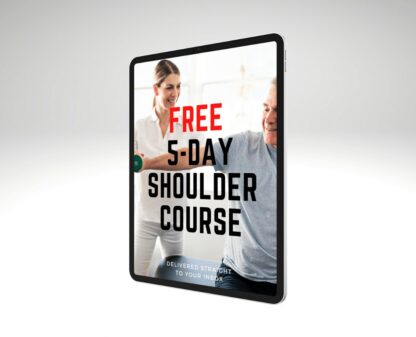Capsular shift surgery followed by physiotherapy to improve outcomes in patients with atraumatic shoulder instability

Introduction
Shoulder instability is a condition frequently seen in physiotherapy practice. For traumatic shoulder instability, surgery is often chosen as the preferred option. Physiotherapy rehabilitation is mostly indicated in atraumatic shoulder instability, to strengthen the stabilizing musculature around the glenohumeral joint. However, individuals with atraumatic shoulder instability may have associated structural damage at the joint. For this subset of patients, it is unclear if surgical intervention is beneficial. Therefore, this randomized controlled trial investigates the addition of surgical intervention to physiotherapy rehabilitation to improve outcomes for patients with atraumatic shoulder instability who have soft tissue damage at their shoulder joints.
Methods
Eligible candidates for inclusion in this RCT had atraumatic shoulder instability that was defined as insecurity (apprehension) at the shoulder joint. Participants were randomly assigned to the stabilization surgery or control groups. The shoulder stabilization group underwent capsular plication surgery and labral repair where necessary. Capsular plication surgery is a procedure where the loose or excess part of the capsule is tightened. The participants randomized to the control group underwent arthroscopic evaluation of the joint capsule without any capsular or labral procedure.
Both groups followed the same post-operative physiotherapy protocol. This protocol had the aim to improve the function of the muscles surrounding the shoulder joint and was initiated after a 4-week immobilization period in a sling. A maximum of 12 physiotherapy sessions were held over a period of 6 months postoperatively.
The primary outcome was pain and functional impairment at 2 years, measured by the self-reported outcome measure Western Ontario Instability Index (WOSI). The minimal important difference is a reduction of 10.4 points.
Results
A total of 68 participants were randomly assigned to the arthroscopic shoulder stabilization surgery group or to the control group receiving diagnostic arthroscopy only. Both followed the same postoperative physiotherapy protocol. The baseline criteria indicated that the groups were well matched at baseline.

The WOSI score at baseline was 67 and 68 in the control and shoulder stabilization groups, respectively. The primary endpoint was the change in WOSI score at 24 months. Here the control group scored 32 and the shoulder stabilization group scored 35. The between-group difference was thus below the threshold for the minimally clinically important difference of 10.4 points. However, both groups improved throughout the course of the study period, with the most improvements seen in the first 6 months.

Questions and thoughts
Atraumatic shoulder instability was defined as insecurity (apprehension) at the shoulder joint, however, no clinical tests were described. So here it is unclear to what extent the instability occurred in patients’ everyday life. Did it occur during sporting activities or already during simple everyday tasks? Instability may present as a spectrum and the different options for rehabilitation may be more suited for certain subsets of patients. This question was, however, not the scope of the current study.
Every participant with atraumatic shoulder instability underwent diagnostic arthroscopy and only once the arthroscopy confirmed the presence of capsular or labral damage, the participant was randomly assigned to either the surgical stabilization group or the control group. This implied that every participant had received some form of surgery. In some, the joint was repaired, in some, the joint was only assessed. In either case, some form of invasive procedure is performed and this may be accompanied by adverse events. The results indicate that the arthroscopic capsular shift did not lead to benefits compared to the diagnostic arthroscopy and as such, should not be considered in atraumatic shoulder instability.
Talk nerdy to me
The groups were well matched at baseline, however, no details were given for the arthroscopic findings. So here we don’t know to what extent the groups matched for the capsular and labral damage seen during the arthroscopy.
Both groups improved throughout the first 6 months of the study period. The postoperative physiotherapy protocol was initiated after 4 weeks of sling immobilization following the arthroscopy. You could thus assume that the physiotherapy program was the main driver for the improvements seen, regardless of whether having received the capsular shift surgery or not. Nevertheless, this is too simplistic, as the average duration of symptoms was about 7 years and about 90% of the included participants had previously received physiotherapy but nevertheless still had a high degree of pain and impairment. Here, the placebo effect may have contributed to the improvements seen.
Take home messages
Capsular shift surgery, where the joint capsule is “tightened”, did not lead to better results than placebo arthroscopic surgery in terms of improvement in pain and functional impairments. Both groups participated in the same post-operative physiotherapy protocol, indicating that this would be suitable for atraumatic shoulder instability rehabilitation.
Reference
Additional Reference
TWO MYTHS BUSTED & 3 KNOWLEDGE BOMBS FOR FREE
What university doesn’t tell you about shoulder impingement syndrome and scapula dyskinesis and how to massively level up your shoulder game without paying a single cent!



